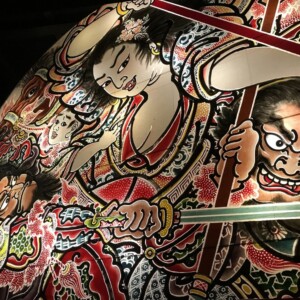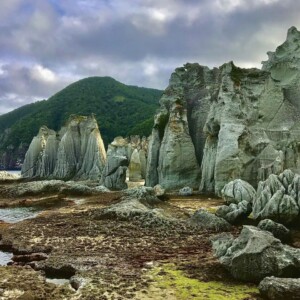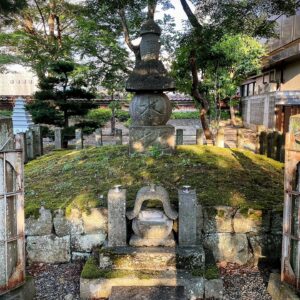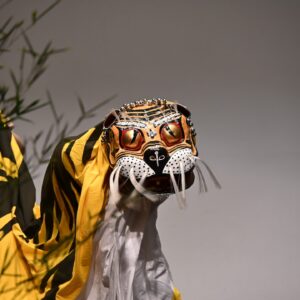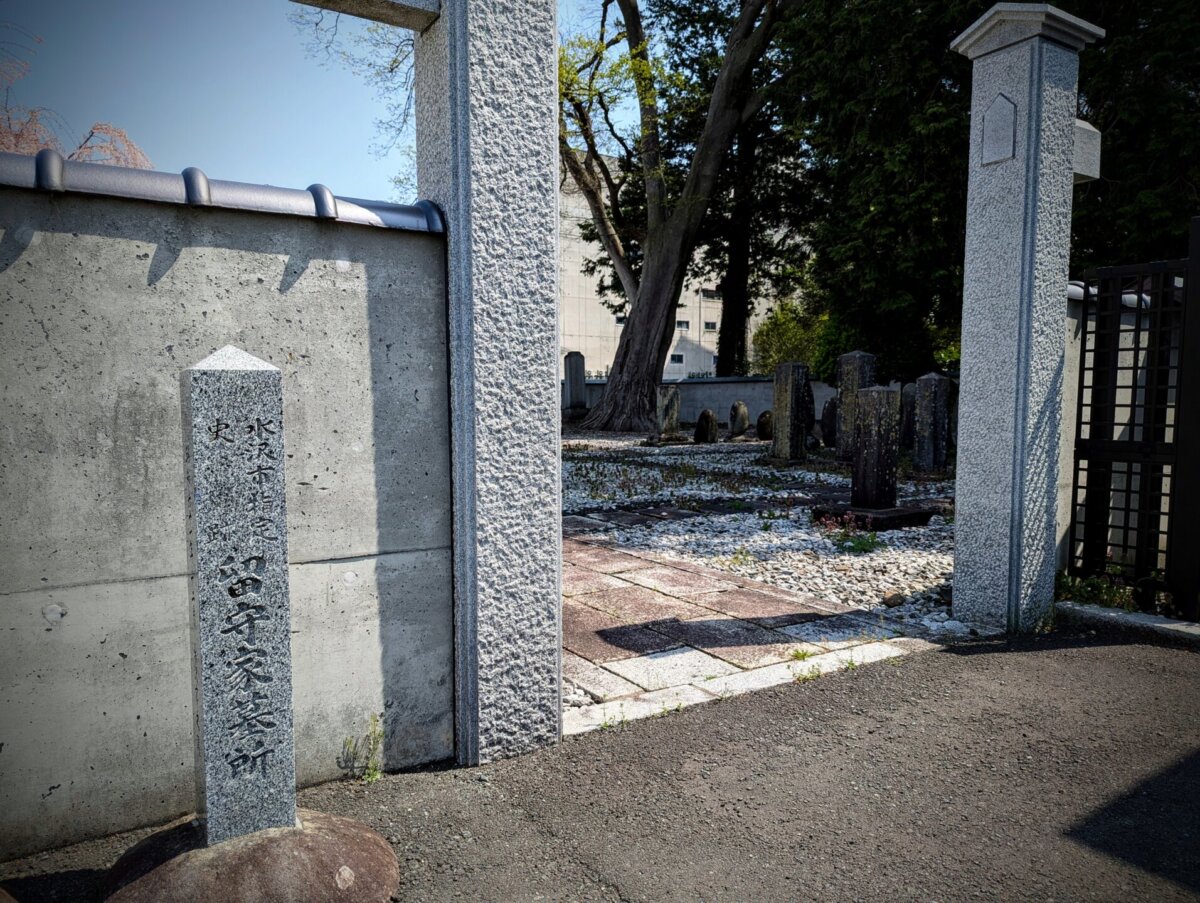
Daian-ji Temple, the family temple of the Mizusawa Date clan and Rusu clan in Mizusawa, Oshu (Iwate Prefecture)
table of contents
Temple sits quietly in the city of Mizusawa in Oshu, Iwate Prefecture . Although it is not well known as a tourist destination, it is home to historical sites that convey the history of Oshu to the present day.
The Rusu clan the Mizusawa Date clan once ruled this area . This the family temple of the Rusu clan it is also known as the grave of Takano Choei, a famous Dutch scholar at the end of the Edo period
This article explains the origins of Daian-ji Temple and the history of the Rusu clan, the Mizusawa Date family.
What is Daianji Temple?
Daian-ji Temple is a Rinzai sect Myoshinji temple located in Otemachi, Mizusawa Ward, Oshu City.

Munetoshi the founder of the Mizusawa Date family, , Ichinoseki (now Ichinoseki City, Iwate Prefecture), which was his territory at the time, in order to salvation his father, Masakage.
After that, under the third lord of Mizusawa Castle Date (Rusu) Munekage , it became the family temple of the Rusu clan. It was built in its current location around 1640, and has since been burned down and rebuilt several times. In 1860, Kichijoji, which was the prayer temple of the Rusu clan, was moved here and used as the main hall, and has undergone several repairs and reconstructions to reach its current state.
Genealogy of the Mizusawa Date family and the Awaya clan
The Rusushi clan Izawa Iekage, who claimed to be the great-great- grandson of Fujiwara Michikane of the Northern Fujiwara clan.In 1190, after the conquest of Oshu, Iekage was appointed by Minamoto no Yoritomo as the Rusushi of Mutsu Province, and his descendants inherited the position, so they began to use the title as their surname and call themselves Rusushi.
During the Nanboku-cho period and Muromachi period, he became a lord of Kunino-no-Kai Castle (now Iwakiri, Miyagino-ku, Sendai City, Miyagi Prefecture).
Date Masamune's uncle, Masakage, becomes the outskirts of the family.
Masakage was born in 1549 as the third son of Date Harumune, the grandfather of Date Masamune . In 1567, he was adopted by Rusu Akimune as a result of a political strategy by his father, Harumune, and became the 18th head of the Rusu clan. He subsequently assisted his brother Terumune and nephew Masamune, contributing to the expansion of the power of his family, the Date clan.

During the Battle of Sekigahara, he was ordered by Masamune to take part in the Battle of Hasedō Castle as commander-in-chief of the Date army , and went to the rescue of Mogami Yoshiaki, who was under attack by Uesugi Kagekatsu.
Later, Masamune was allowed to revert to the Date surname, and in 1604 he was given Ichinoseki 20,000 koku.
Date (outside) Munetoshi, said to be the founder of the Mizusawa Date clan
In 1607, following the death of his father, Masakage, Date (Rusu) Munetoshi . He made his debut as a vanguard in the Winter Siege of Osaka, and fought bravely in the Summer Siege of Osaka, leading a musketeer unit. However, he incurred the wrath of Masamune by only fielding around 40 soldiers, and in 1616 his fief was reduced to 10,000 koku in Kanegasaki, Isawa County.
However, after the construction of Ishigaki Koji in Edo Castle was completed, the Mizusawa Date clan was allowed to move their castle to Mizusawa Castle in 1629, and the Mizusawa Date clan held the area as their territory until the end of the Edo period.
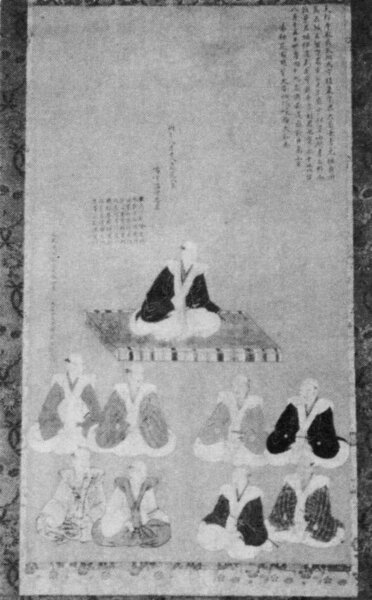
For this reason, the successive heads of the Mizusawa Date family are sometimes counted starting with Masakage, who reverted to the Date surname, and sometimes starting with Munetoshi, who actually occupied Mizusawa.
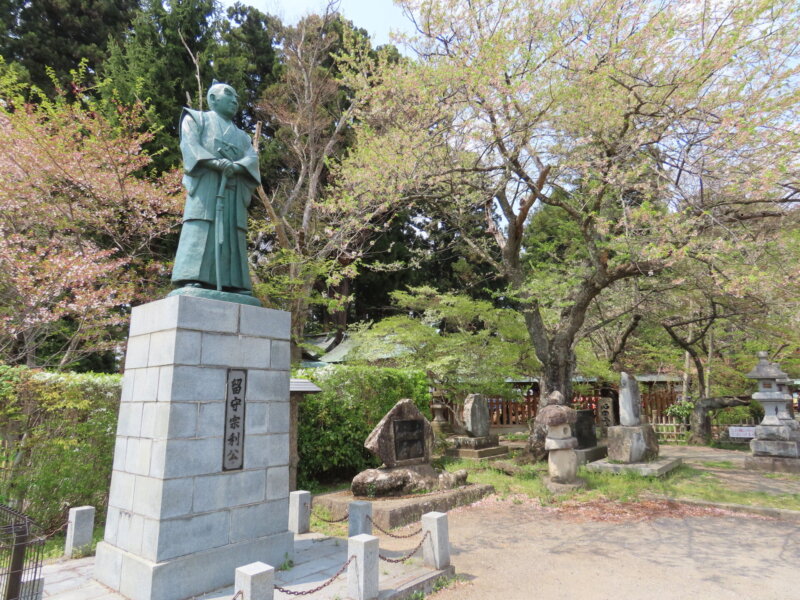
Furthermore, Munetoshi was given the surname Date even before he came of age, so he never actually called himself Rusu. However, since the Mizusawa Date family reverted to the Rusu surname after the Meiji period, the plaque on the bronze statue of Munetoshi erected at Hidaka Shrine in Mizusawa in 1974 reads "Lord Rusu Munetoshi."
The current Daianji Temple and the Tomb of the Absent House
Daian-ji Temple is near Mizusawa Station, and just behind it is the main shopping street that runs straight from the station, but the entrance to the temple is in the opposite direction.
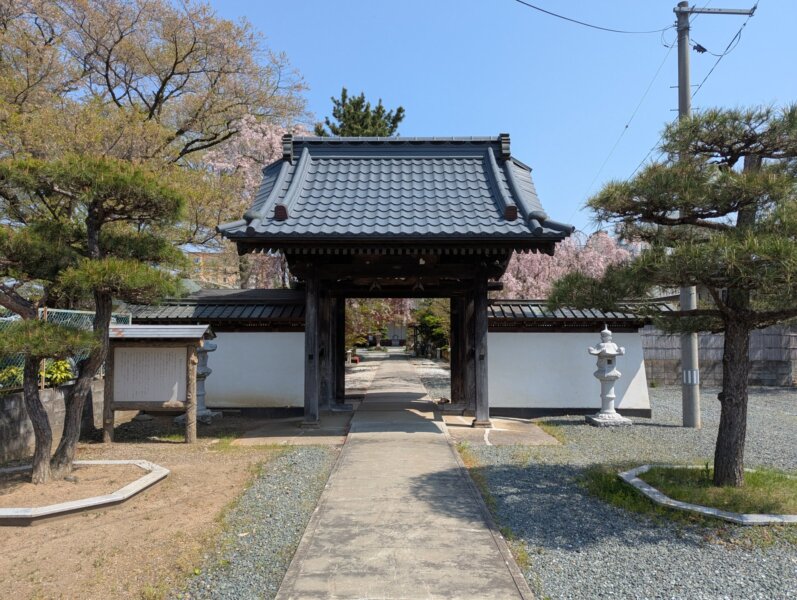
The side of the temple gate is a residential area, so it has a quiet atmosphere.

The plaque on the mountain gate is marked with the words "Taihakusan" which is the mountain name.
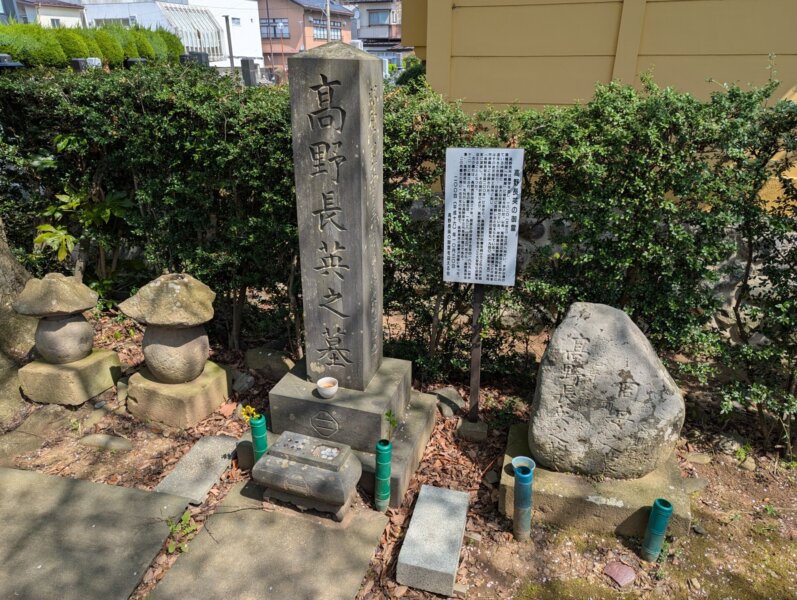
Daian-ji Temple also has the tomb of Takano Choei, a Dutch scholar from the late Edo period
Takano Nagahide is a doctor from Mizusawa and is chased after criticizing the shogunate's policy of isolation. His turbulent life appears in textbooks, but it is not well known that he sleeps quietly in his hometown of Mizusawa.

If you go from the left side of this main hall to the back, you will find the cemetery of the house where you are away.

The cemetery of the house is surrounded by a splendid wall, giving it a truly sanctuary atmosphere.
The gravestones are arranged irregularly within the cemetery, making it difficult to determine whose gravestone belongs without prior knowledge. However, if you walk straight down the stone pavement from the entrance, you will come across the gravestone of Masamune's uncle, Rusu Masakage, who was bestowed the title of Date . The four small gravestones to the right of it are said to belong to four vassals who followed Masakage to his death.
was designated as a tangible cultural property in Mizusawa City in 1974 as it is an important historical site for understanding Mizusawa's history
Daianji Temple <Information>
- Name: Taihakusan Daianji Temple
- Address: 2 Mizusawa Higashicho, Oshu City, Iwate Prefecture, 023-0818
- Phone number: 0197-23-3425
- Official URL: https://mizusawa-daianji.com/


![The specialty of Genbikei, "Flying Dango," is definitely worth a visit! Delicious activities! [Ichinoseki City, Iwate Prefecture] Genbikei bus stop](https://jp.neft.asia/wp-content/uploads/2017/04/IMG_5931-150x150.jpg)
![Bottle Don is the definitive Sanriku souvenir that looks delicious! [Iwate Prefecture] Bottle don (abalone, scallop, salmon roe)](https://jp.neft.asia/wp-content/uploads/2023/06/IMG_5048-150x150.jpg)
![Ryusen-no-no-no-no-no-no-no-no-no-no-no-no-no-no-no-no-no-no-no-no-no-no-no-no-no-no-no-no-no-no-no-no-no-no-no-no-no-no-no-no-no-no-no-no-no-no-no-no-no-no-no-no-no-no-no-no-no-no-no-no-no-no-no-no-no-no-no-no-no-no-no-no-no-no-no-no-no-no-no-no-no-no-no-no-no-no-no-no-no-no-no-no-no-no-no-no-no-no-no-no-no-no-no-no-no-no-no-no-no-no-no-no-no-no-no-no-no-no-no-no-no-no-no-no-no-no-no-no-no-no-no-no-no-no-no-no-no-no-no-no-no-no-no-no-no-no-no-no-no-no-no-no-no-no-no-no-no-no-no-no-no-no-no-no-no-no-no-no-no-no-no-no-no-no-no-no-no-no-no-no-no-no-no-no-no-no-no-no-no-no-no-no-no-no-no-no-no-no-no-no-no-no-no-no-no-no-no-no-no-no-no-no-no-no-no-no-no-no-no-no-no-no-no-no-no-no-no-no-no-no-no-no-no-no-no-no-no-no-no-no-no-no-no-no-no-no-no-no-no-no-no-no-no-no- [Iwate Prefecture] Ryusendo Cave (first underground lake)](https://jp.neft.asia/wp-content/uploads/2023/07/PXL_20230512_052246926.NIGHT_-150x150.jpg)
![[Series ②: The role of the previous nine years and the role of the second three years] The role of the previous nine years is from the truce to the battle again, and the Kokufu army is struggling Taga Castle Ruins](https://jp.neft.asia/wp-content/uploads/2023/11/a0b8b1213124e7a13c7308fa81e053a2-150x150.jpg)
![[Iwate Prefecture] Soft-serve ice cream with sake, miso and wasabi flavor! Why are the soft serve ice cream eaten at roadside stations so delicious? There's also school lunches! Iwate Prefecture Catch](https://jp.neft.asia/wp-content/uploads/2025/06/915fd0ce722ab0f21e74864401170847-150x150.jpg)
![Tateishi-ji Temple, a corner of the four temple corridors, including Chuson-ji Temple, Mokoshi-ji Temple, and Zuigan-ji Temple [Yamagata Prefecture] Yamadera Risshakuji Temple](https://jp.neft.asia/wp-content/uploads/2016/09/26668581_m-150x150.jpg)

!["Negaseki" is one of the three ancient Oshu sekies that surpasses Minamoto Yoshitsune and Matsuo Basho [Tsuruoka City, Yamagata Prefecture] 3809167_m](https://jp.neft.asia/wp-content/uploads/2023/02/3809167_m-150x150.jpg)





